The cheerful yellow flowers and fleshy bright green heart shaped leaves of the perennial lesser celandine lifts the spirit in the herbaceous borders and small woodland. They form an attractive early Spring palette with the blue and yellow eyed flowers of the wood forget-me- not Myosotis sylvatica and jaunty red tulips.
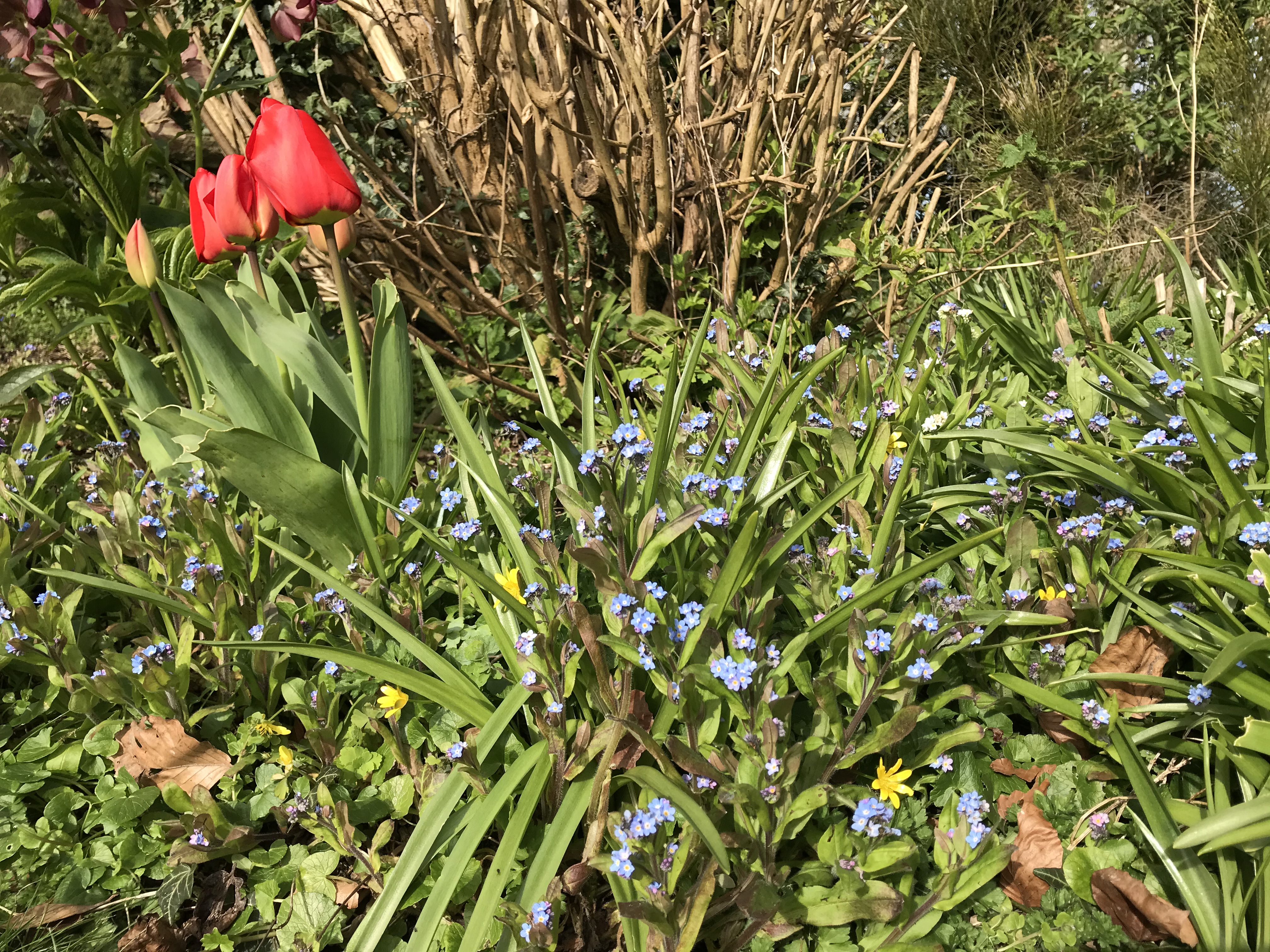
Tulips, wood forget-me-not and lesser celandine
This leads to a further refreshment of botanical tuition sources. The plant was part of the Ranunculaceae or Buttercup Family which is where I find it in my older botany books. The Family has about 2000 species worldwide with most as herbaceous perennials. This is one of those terms I find difficult to remember! -it is a plant that lives for more than 2 years and unlike woody trees / shrubs where the stems persist through the winter, these die back to ground level to produce new shoots the next spring. Many in this Family are poisonous, for example, Monk’s-hood a garden escape can kill in 2 hours.
They are a group of primitive flowering plants with a relatively large and regular shape flower with numerous stamens and separate carpels and a superior gynoecium.

Shows the superior position of the ovary at the top of the receptacle (swollen tip of the stem) as its sits above the petals (one is still in situ off to the RHS) and several male stamens.
A carpel is a collective term for the female ovary, style and stigma and a group of carpels is the gynoecium. The ovary can sit below, above or part way in relation to the petals and sepals. In the lesser celandine the ovary is superior.

Lesser celandine
The golden yellow petals are shinier than most buttercups. This is due to a layer of cells with light reflecting starch grains below the yellow upper layers of cells that contain the 5 different types of anthoxanthin pigments, dissolved in oil bodies within them, that produce the vivid colour. These type of details to the parts of just one small flower make me wonder again at ‘how it all evolved’ and the exquisite mechanics.
The large flowers make a good landing platform for pollinating insects. The nectar collects under a small flap at the base of each petal which encourages the insect to crawl across the flower, where the stamens then brush the pollen onto the insect’s body.
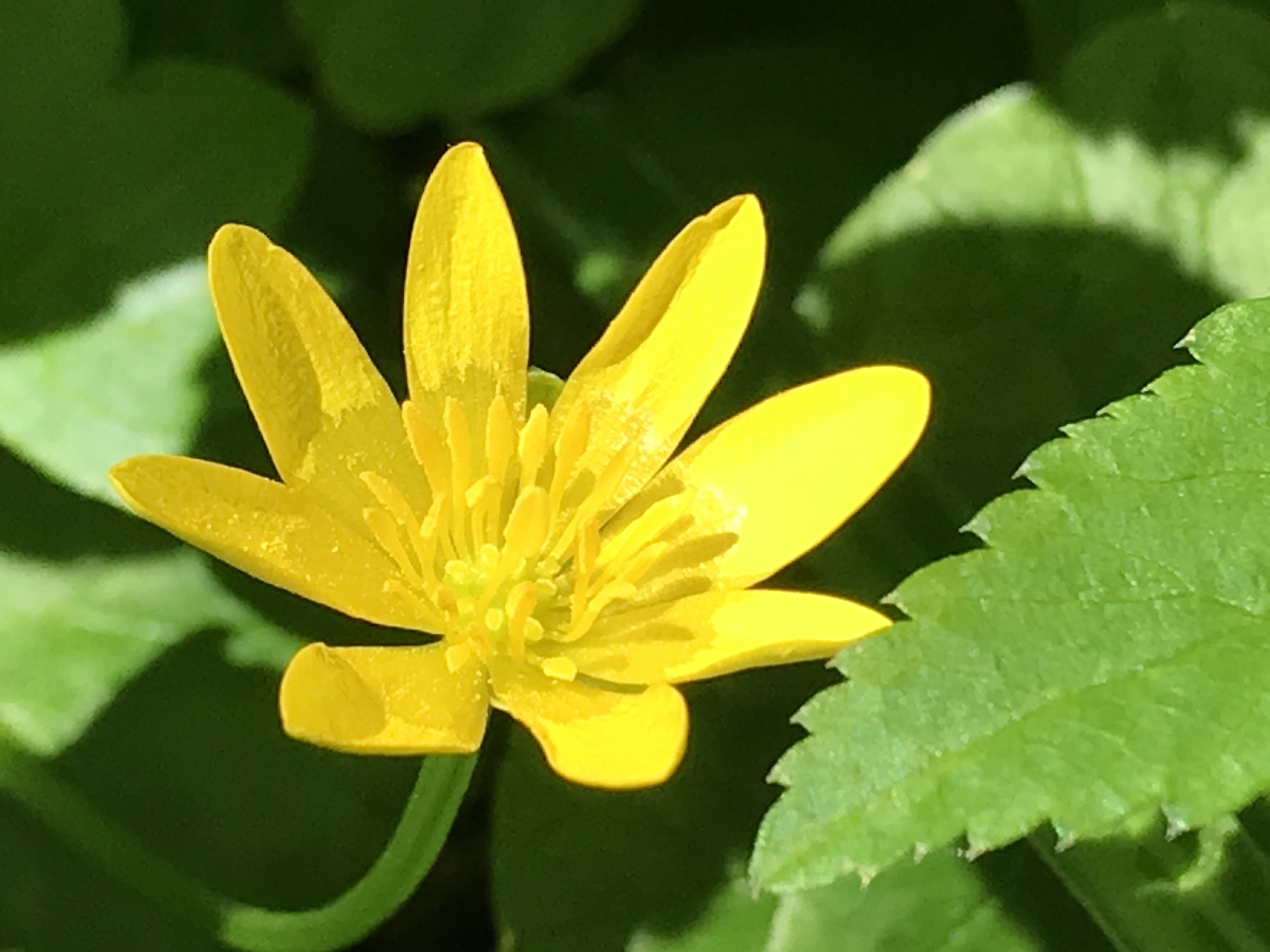
Shows the numerous petals, female carpels and male stamens. Good landing site for an insect to crawl about seeking the small nectaries
However, lesser celandines have been moved by a leading authority Stace 2010, to a new genus Ficaria because they have only 3 sepals (rather than the usual 5 of the Ranunculus Family) and 8-12 petals (rather than the usual 5). In addition, I didn’t know until recently there were 2 sub species (ssp )native to the UK with 5 in Europe. Their diffentiation is based on the absence or presence and shape of various features such as tubercles and petal size and shape.
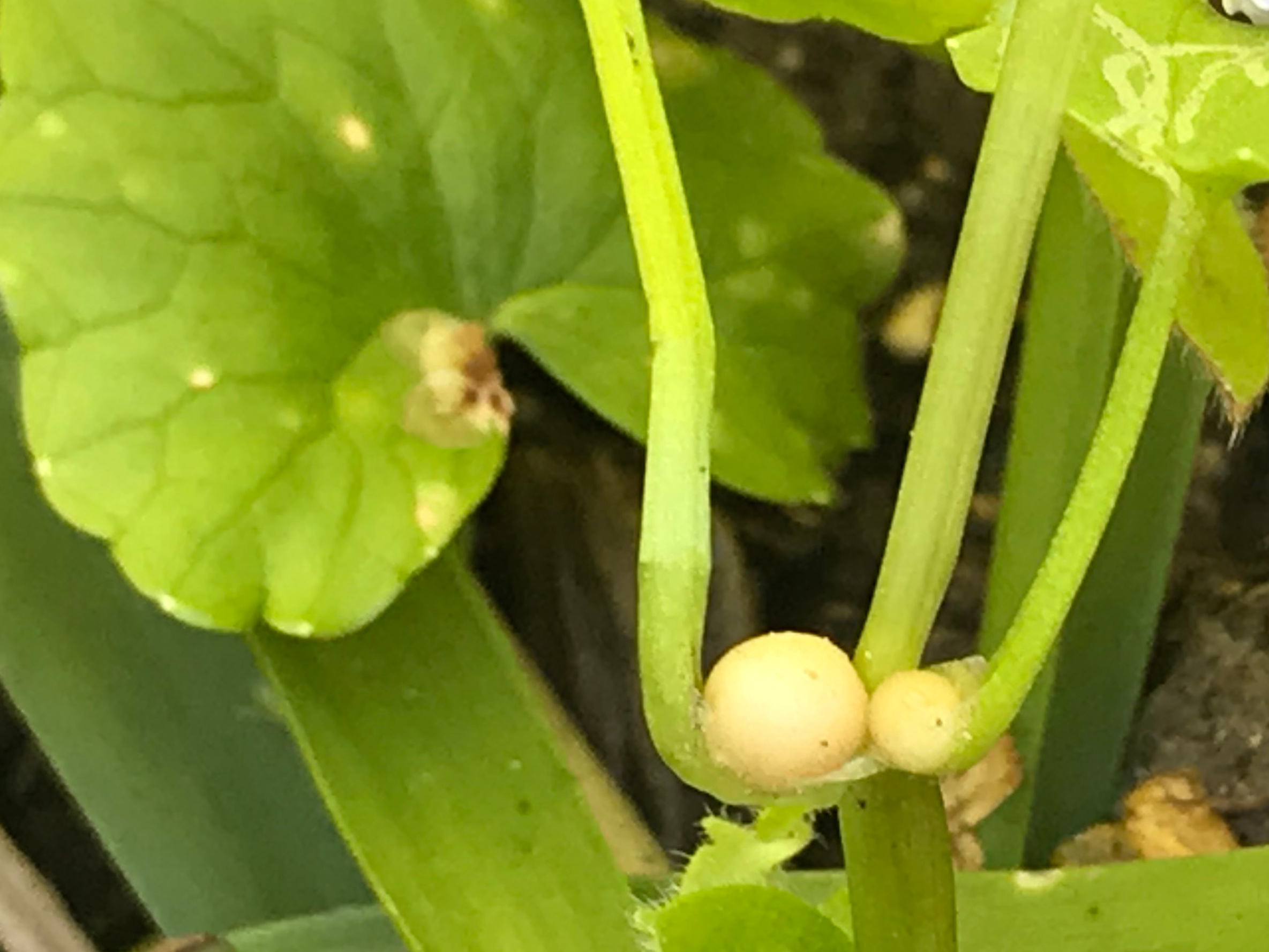
Clearly shows the above ground bulbils or tubercles in the leaf axils that are only visible after flowering. Sub spp verna.
Ficaria verna ssp fertilis has fertile seeds and no above ground modified tubers called tubercles. In contrast, Ficaria verna ssp verna has few fertile seeds and instead propogates via tubercles in the leaf axils and is a common garden ‘weed’. This is the sub spp I’ve studied in the garden.
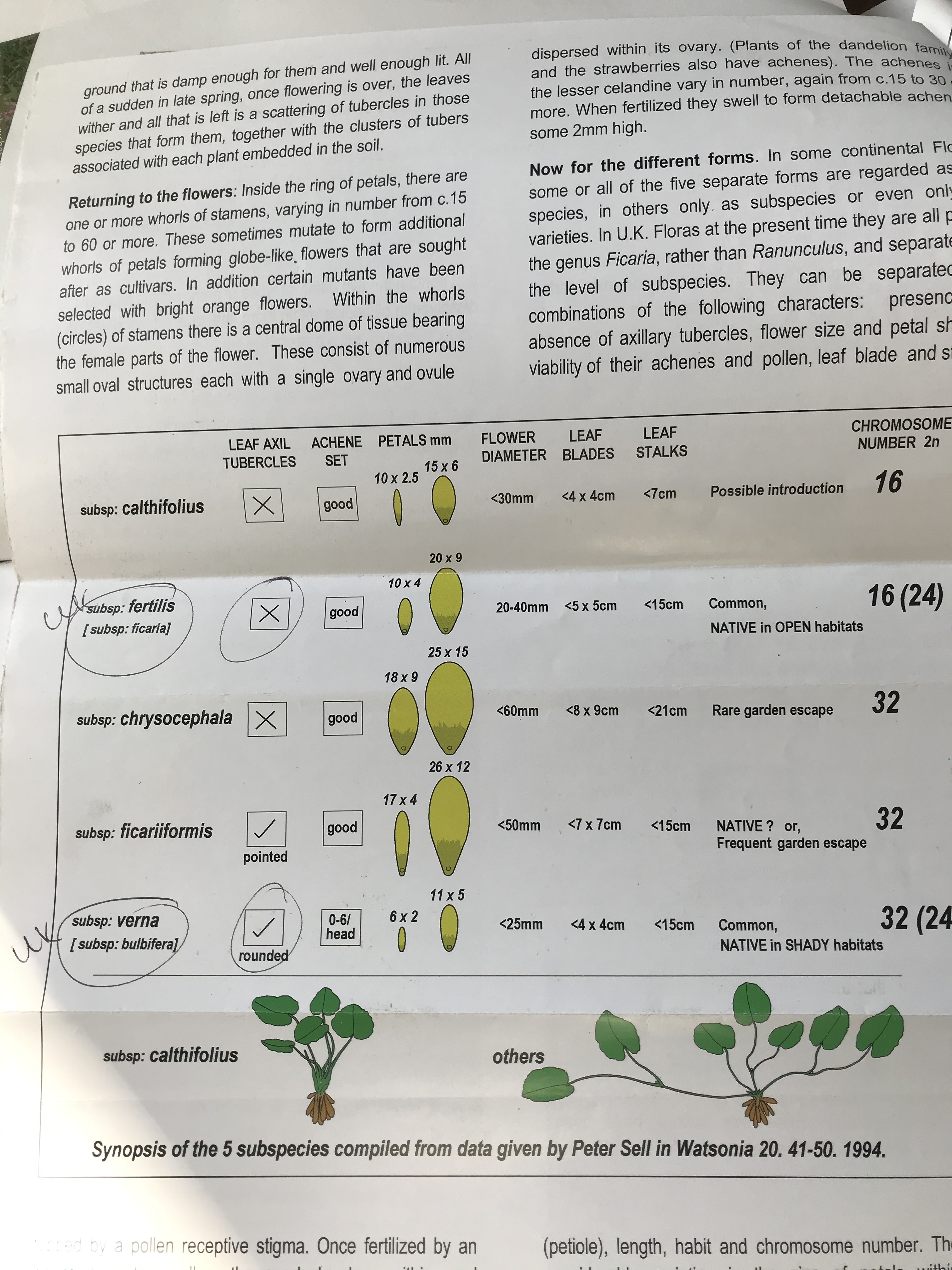
Extract from Essex Botanical Society magazine – in one of my flora field books. Details of the 5 known sub spp in Europe
At the cellular level, the former has 16 chromosomes compared to spp verna with 32 and they can form triplods (24) where the flowers cannot be fertilised because of the odd number of chromosomes that cannot pair up properly.
Along with the tubercles in the lesser celandine comes weather battered tulips.
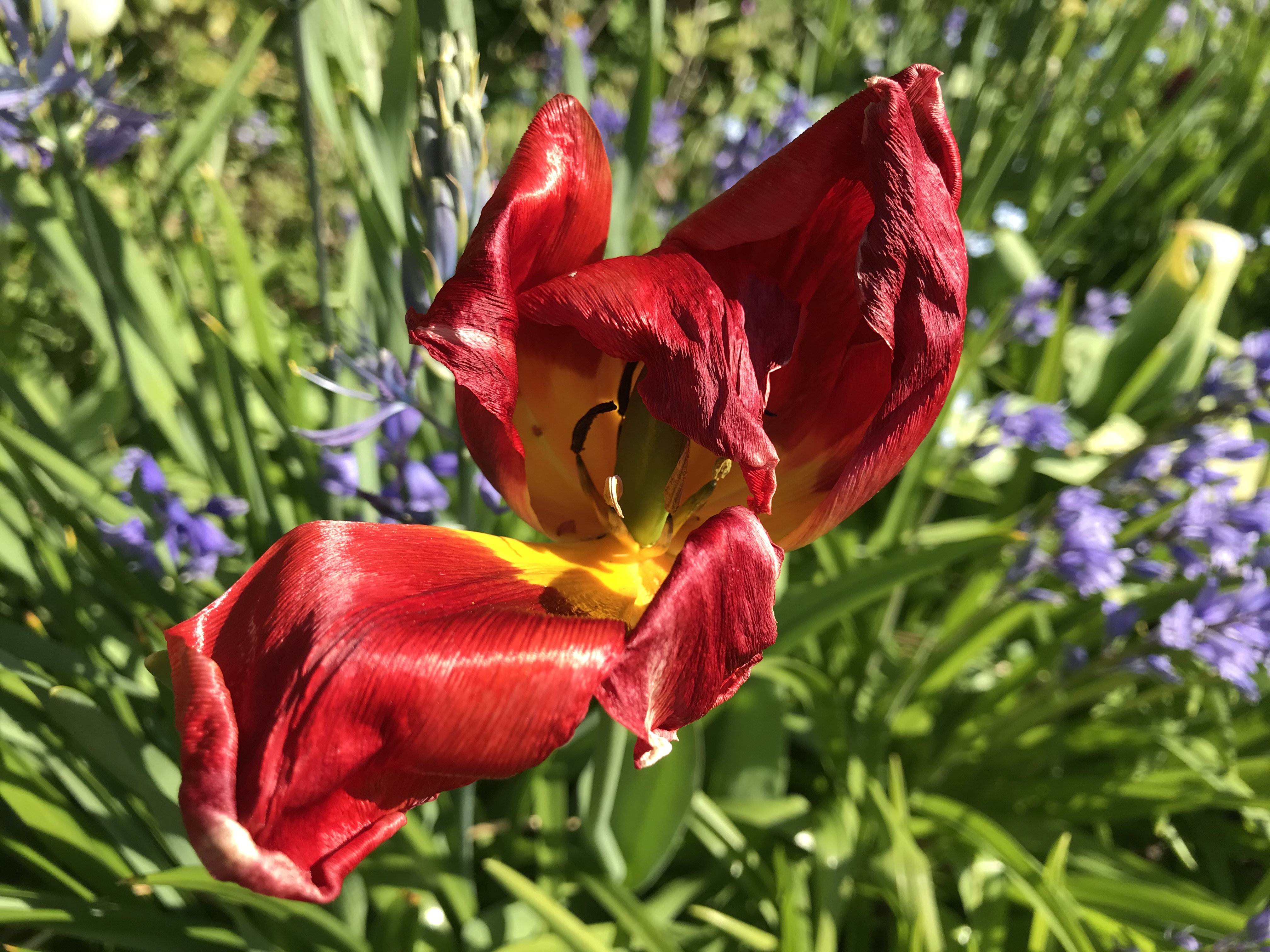
Weather battered tulip
The brain needs gentler reflection.The vernacular name is said to be derived from the greek and latin for swallow, as its flowering time February to May coincides with the return of the Barn swallow to Europe. Well, there’s a few flowering still when I saw my first swallow in mid April.
Commercial herbalists of the the 17th & 18th centuries formulated the The Doctrine of Signatures, which stated all plants had been ‘signed’ by the Creator with physical clues as to their medicinal attributes. Thus, yellow flowers were ‘good’ for jaundice and the knobbly root tubers of the lesser celandine as treatment for piles and thus a common name of ‘pilewort’. The tubers are the only toxic part of the plant and can be cooked like potatoes and are high in vitamin C.
The spring time flora hunt triggers part of a poem I’ve learnt called Addlestrop by Edward Thomas with the evocative lines of “..and willows, willow-herb, and grass, And meadowsweet, and haycocks dry…”. This sparks more enquiry as to whether there are poems about celandines and E Thomas pops up again:
…She found the celandines of February
Always before us all. Her nature and name
Were like those flowers, and now immediately
For a short swift eternity back she came,
Beautiful, happy, simply as when she wore
Her brightest bloom among the winter hues..
0 Comments